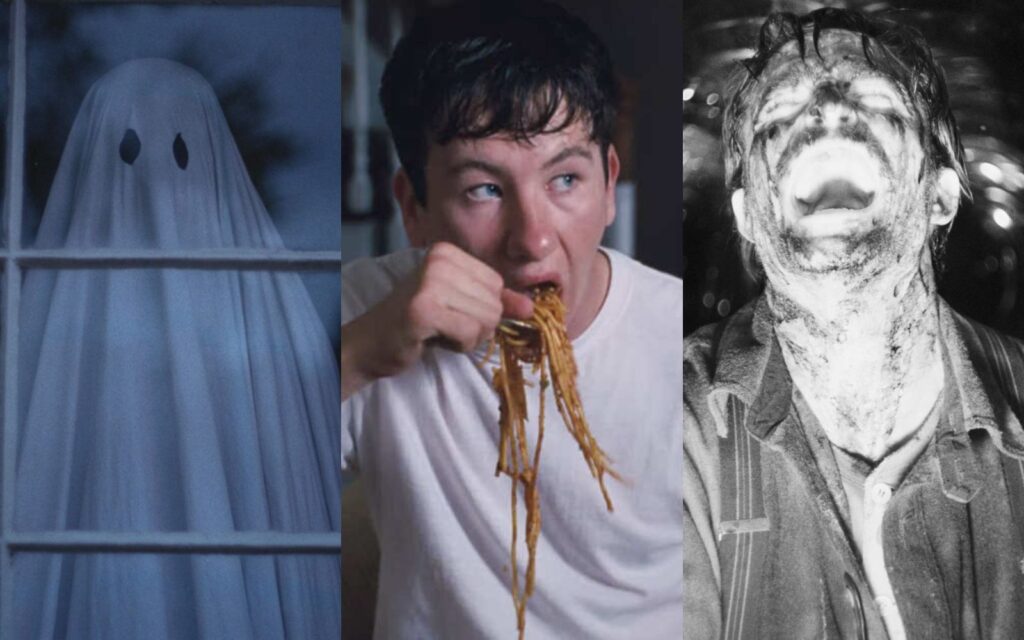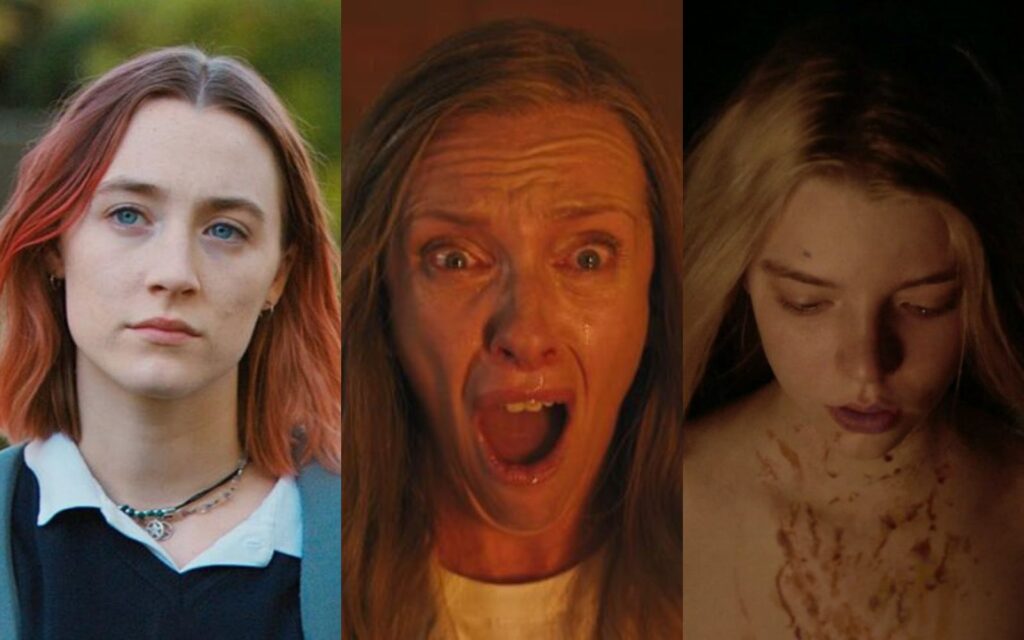“This is giving A24 vibes” – If you’re a cinephile who spends a lot of time online, chances are you’ve encountered this statement tossed around left and right. This has become a thing over the last couple of years, growing from a mere Twitter slang to a cultural phenomenon in the global film community, describing a specific aesthetic, creative license, and curation of independent films that are changing the game of modern cinema.
But what is an “A24 vibe” exactly? In this article, we’ll categorically break down this new wave of independent filmmaking, explore how A24 has redefined the current cinematic landscape, influenced contemporary storytelling, and pushed a unique brand identity from the most niche market to mainstream audiences.
Here’s What You Need to Know About A24
Founded in 2012, A24 is an independent entertainment company that specializes in film and TV production and distribution. Yes, that’s right – A24 is a film studio. It’s the hipster, contemporary minor league fella that has played the role of underdog against major league players – from Disney, and Warner Bros. to Columbia Pictures, just to name a few.
But modern cinema hasn’t exactly been devoid of influential independent film companies. For years, we’ve seen Annapurna, Sony Picture Classics, and Searchlight Pictures win over critics and audiences, bagging accolades year after year, and producing masterfully crafted movies that rival the legacy studio titans. But they’ve never quite entered the cultural zeitgeist like A24 did. No one has ever said, “Oh, this is giving me such Annapurna vibes.” It doesn’t have the same ring to it, does it?
So, how can an 11-year-old distributing company morph from a simple business model into one of the most influential forces in the entertainment industry? What are they doing differently?
The Language of Aesthetics & Color Theory

One of the more obvious A24 identifiers is how detailed and palpable their visuals are. No, not the explosive Marvel-like VFX and CGI-heavy productions, but it’s the craftsmanship of their aesthetics that usually play heavily with the symphony of color theories. From the color grading, elaborate lighting, and melancholic darkness, to rich imagery, A24 films utilize the language of visuals to help serve the story. Their mise en scènes drive the narratives themselves, almost as if their movies are carefully curated by a single decision-maker to ensure that their film library is consistently on brand, regardless of the filmmaker helming these projects.
From Midsommar and its sunshiny and saturated atmosphere that serves as a contrast to the story’s dark pits; Moonlight and its intimate bisexual lighting of blue, pink, and purple paying homage to its LGBTQ storyline; The Florida Project’s iconic pink motel backdrop representing the innocence of children and their sparkly glimmer of hope; The Bling Ring’s hard candy explosion of pop culture and the lifestyle of the rich and famous, to Everything Everywhere All At Once’s multiverse fever dream in a series of snappy, kinetic images.
Edgy, Quirky, & Absurdist Tales

The power of independent cinema is it abolishes the typical formulaic narratives most big studio films produce. They’re not afraid to go beyond what is normalized as traditional, commercially lucrative content – you know, where boy meets girl, they fight, they make up, insert a few more obstacles, and at the end of the day, they still end up together – or maybe not, for dramatic effect.
Either way, A24 refuses to follow that path, showcasing unconventional and innovative plots that are nothing short of original: whether it’s about a bizarre relationship between a lonely man and a cadaver; an AI-powered robot desperately wanting to be a part of the human community; an alien pretending to be Scarlett Johansson, or a man potentially becoming a lobster if he doesn’t find his soulmate.
A24 films are not just crowd-pleasers. Instead, they stir conversations, encourage viewers to read the subtext, and showcase the possibilities of cinema beyond the expected tropes and archetypes.
Arthouse Made Accessible

If you’re a full pledge cinephile, you’re probably well-aware of arthouse cinema from auteurs like Federico Fellini, Michelangelo Antonioni, David Lynch, Ingmar Bergman, Bela Tarr, Jean-Luc Godard or Andrei Tarkovsky. The problem is that it’s almost impossible to access these films both logistically and emotionally. Unless you can delve deep into the rabbit holes of the internet to find a legitimate copy, or you have a high level of patience for 4-hour films about a French lady cleaning her apartment, the accessibility to these films is as insurmountable as wading through waist-high sand for regular moviegoers. A24 film’s power in film distribution and curation gives it an edge to showcase these types of films at a level that’s akin to the mainstream.
When you think of films like A Ghost Story, The Killing of a Sacred Deer, or The Lighthouse, they appear avant-garde on paper and have no business being digestible – but they are. A24 carefully curated these films by finding the balance of auteur and audience accessibility. These movies aren’t snotty or condescending to their audience. At the same time, they uphold the filmmaker’s artistic vision without compromising their creative flair.
Character-Driven Narratives

A24 often features off-beat characters whose human experiences serve as the device to drive their respective narratives. There’s Christine in Lady Bird, whose impulsive and ardent choices serve as the film’s coming-of-age compass; Kayla Day in Eighth Grade who navigates social anxiety in her alienation and insecurities; the entire ensemble of 20th Century Women, exemplifying the perspectives of a multi-generational family; Robert Pattinson’s Connie in Good Time and Adam Sandler’s Howard Ratner in Uncut Gems, whose ballsiness and social repercussions build the film’s palpable tension; Thomasin in The VVitch, whose enigmatic fate left us to ponder whether she genuinely sold her soul to the devil or succumbed to madness, and Toni Collette’s Annie in Hereditary, whose grief is the catalyst for the film’s horror, purely driven by human emotions and not by the plot.
Instead of relying on paper-thin character arcs, A24 films present us with nuanced and layered profiles. This distinctive approach transforms their movies into intimate character studies, rather than the predictable, formulaic popcorn flicks we typically encounter in mainstream cinema.
What’s Next?
While it’s still relatively a baby, A24 has already transitioned from a scrappy little distribution company that barely gets any attention within its first few years, to skyrocketing with Everything Everywhere All At Once, one of the most critically and commercially successful films in the history of independent cinema, solidifying the studio’s position as one of the biggest forces in Hollywood. And just like any other art, this so-called “vibe” will evolve and transcend, continuing to shape the future of cinema in ways we can only imagine.
What’s your favorite A24 film?







